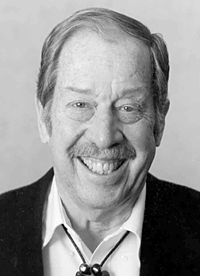Robert W. Bemer
Born February 8, 1920, Sault Ste. Marie, Mich.; programmer extraordinaire; inventor of many terms in common usage and contributor to Cobol and Fortran.

Education: AB, mathematics, Albion College, 1940; certificate, aeronautical engineering, Curtiss-Wright Technical Institute of Aeronautics, 1941.
Professional Experience: programmer, Rand Corp., 1949-1951; group leader, mathematical analysis, Lockheed Corporation, Burbank, Calif., 1951-1952; manager, numerical analysis group, Marquardt Aircraft, 1952-1954; manager, mathematical analysis department, Lockheed Missile Systems Division, 1954-1955; IBM Corp.: assistant manager, programming research, 1955-1957, manager, programming systems, 1957-1960, manager, Corporate Logical Systems Standards, 1960-1961, director of programming standards, 1961-1962; director, systems programming, Univac Division, Sperry-Rand Corp., 1962-1965; consultant to general manager, Bull GE, 1965-1966; manager, systems and software engineering integration, General Electric Co., 1966-1970; staff consultant to vice president, ASTO, 1970-1974; editor, Honeywell Computer Journal, 1972-1974; senior consulting engineer, 1974-1982; president, Bob Bemer Software Inc., 1982-present.
Honors and Awards: fellow, British Computer Society; three times AFIPS NCC Pioneer Day Honoree-Cobol, Fortran, and SHARE.
Bemer is the inventor of the words "Cobol," and "CODASYL," six ASCII characters, and the concepts of registry and escape sequences in character codes. He also invented the term and defined the nature of the "software factory." At IBM he developed the first load-and-go system (PRINT I) and also was responsible for the implementation of the programming system FORTRANSIT, which provided a quick first compiler for the IBM 650 computer, and was the first programming language to run both decimal (IBM 650) and binary (IBM 704) computers. For the support of commercial programming Bemer developed PRINT I; in the late 1950s he developed XTRAN, a step towards Algol, and "Commercial Translator," which became a significant input to Cobol. His major Cobol innovations were the IDENTIFICATION and ENVIRONMENT divisions, and the PICTURE clause.
Bemer is probably best known for his contributions to ASCII (American Standard Code for Information Interchange). He was not the inventor of ASCII; a hard-working committee surveyed many candidates for a code for information interchange, but instead of selecting one, it generated a code that did not exist before it began its work. Bemer represented IBM in this work, even though IBM still favored EBCDIC. At the time the hardware permitted the use of only seven bits, and thus any alphabet was limited to 128 characters and symbols. While hardware circuitry used eight bits, one bit was used for distinct check-bit, or error-bit, purposes. The American Standards Committee X3.2 recognized the limit of 128 symbols as being a significant barrier to the general acceptance of the code, and thus sought a solution. Bemer proposed the concept of an "escape sequence" that would allow the information system to break out of one alphabet and enter another that would be identified by the 7-bit identifiers following the escape code 0011011. As of 1991, 150 such extra-ASCII alphabets have been defined and registered, including Greek, Cyrillic, Arabic, and Japanese.
The escape sequence is the basis of many technologies, such as cursor movement and color on video screens, laser printers, photo-composition, video games, and computer-generated movies.
Bemer's forceful articulation and demonstration of the simplicity of the "escape sequence" solution achieved acceptance of a US standard that rendered as nonstandard all existing computer designs, software systems, and telecommunications hardware, including the whole repertoire of IBM equipment that used EBCDIC (Extended Binary Coded Decimal Interchange Code). Remarkably, ASCII and its companion parallel codes have survived for almost 30 years, along with only a few programming languages such as Fortran and Cobol. Very few such basic technologies have managed to survive through so many generations of machines. Since personalized automobile license plates became available, Bemer's cars have carried the tags "ASCII," "ESC SEQ" "Cobol 1," and "Cobol 2."
QUOTATION
"There is something wrong with a profession in which the only way to get anything done is to find a bearded wonder, lock him in a closet, and slip him crackers under the door." (From first COINS Symposium, Miami, Fla., 1971)
BIBLIOGRAPHY
Biographical
Bemer, R.W., "Nearly 650 Memories of the 650," Ann. Hist. Comp., Vol. 8, No. 1, Jan. 1986, pp. 66-69.
Significant Publications
Bemer, R.W., "A Proposal for a Generalized Card Code [of] 256 Characters," Comm. ACM, Vol. 2, No. 3, Mar. 1959, pp. 8-13.
Bemer, R.W., "ESCape-A Proposal for Character Code Compatibility," Comm. ACM, Vol. 3, No. 2, Feb. 1960, pp. 71-72.
Bemer, R.W., "Survey of Modern Programming Techniques," The Computer Bulletin, 1961, pp. 127-135.
Bemer, R.W., "A Politico-Social History of Algol," Ann. Rev. in Automatic Program, Vol. 5, Pergamon Press, New York, 1969, pp. 151-238.
UPDATES
Bemer was the 2002 IEEE Computer Pioneer Award Recipient. He died June 22, 2004 (MRW, 2012)
New content Copyright © 2013-2023 by the IEEE Computer Society and the Institute of Electrical and Electronics Engineers Inc.
All rights reserved. This material may not be reproduced or redistributed without the express written permission of the copyright holder.
